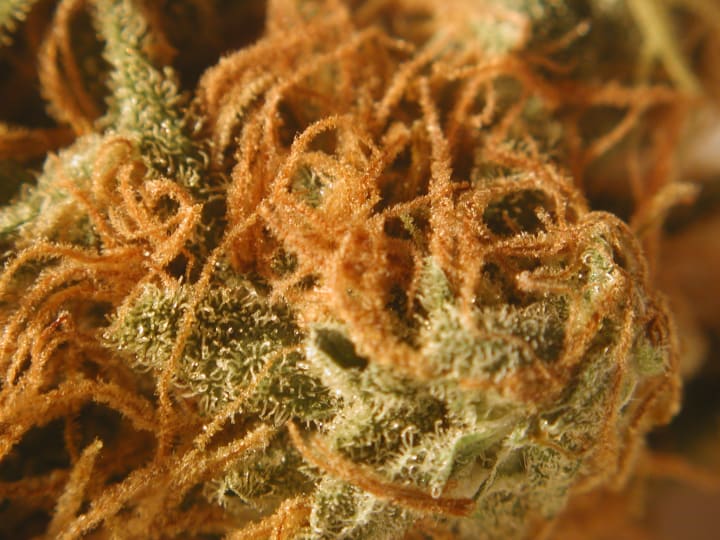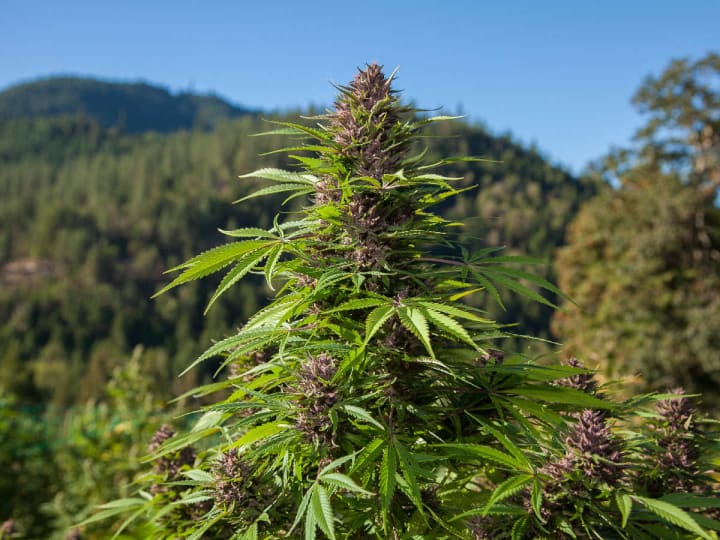How to Know When It's Time to Harvest Your Weed
Following these signs to know when it's time to harvest your weed will help you better tailor your weed to fit your needs.

Anyone who has happened upon this piece likely has some fondness or curiosity concerning weed. Weed can be great for relieving stress, dulling pain, or just an all around great time, but it is sometimes hard to come by. Though it isn't terribly hard to find a source, your supply is only as reliable as that source. We've all had to handle dealers who perpetually change the time and place of meeting, or even flat out blow us off (which kind of comes with the territory).
At some point or another, we have all thought about growing it for ourselves and wondered how difficult this would be. How do I plant it? How long will it take? How will you know when it's time to harvest your weed? To clarify up front, this is not a guide to growing cannabis, a marijuana growing FAQ, nor an encouragement to do so. Rather, it is meant to inform those who have already taken up the task. When do you harvest your plant? What are the signs that you are ready to do so? Is it ready to burn right away? These are important questions that must be asked in such an endeavor.
While it is true that cannabis is one of the hardiest, strongest, and easily grown plants on earth, the best results for smoking will occur if you apply the best growing conditions and look for the signs of a mature plant. Much like fruits and vegetables, there is an ideal time to harvest cannabis for the best results. Just as a prematurely picked berry will be tart and sour, prematurely harvested cannabis will be less potent and less plentiful. However, remember that more time equals more potency, so buds that have been left to harvest for longer than necessary will likely put you to sleep (not always a bad thing).
It is of critical importance to recognize what a plant will look like when it is ready for harvest. As we all know what the finished product looks like, it is a good idea to assure that the plant contains the fat buds we have come to recognize. If you are seeing more white hairs than bud, you are a long way off. These thicker, longer "hairs" are known as pistils, and premature examples will stick out relatively straight, looking more like Rick Sanchez than bud. As the plant matures, these hairs will curl up and will darken, usually to a shade of orange and the more orange, the more potency. As this transformation occurs, the buds themselves will increase in size and density. At the very least, you want to wait until there is vastly more orange hair than white.
Orange Hairs (Pistils) and Trichomes (The White Snow-like Specks

One major thing to look for when growing cannabis plants is the presence of trichomes on your buds, (the sparkly, sticky, white specks on the bud that contain much of the active ingredients such as THC). In order to further examine the trichomes, it may be advantageous to employ the use of a magnifying glass or even a handheld microscope (if you happen to have one lying around). A proper and potent trichome will look like little clear mushrooms, with clear shaft and a little round glob at the end. These trichomes are responsible for most of the effects of the plant and are the reason that the best bud is the stickiest bud. If you can see an abundance of these mushroom-like trichomes on your fully articulated buds, you likely are ready to harvest. Though all glandular trichomes will be relatively clear in appearance, the dankest of dank trichomes will be a bit cloudy in appearance when magnified (much like your failed drug test samples). As this is a very subtle distinction, it is difficult to determine readiness from this feature alone. As such, if you have an abundance of these glandular trichomes on your plant, check to make sure that your buds are fat, and that most of your pistils are orange and curly, it is pretty likely that your flower is ready to pick.
Outdoor Marijuana Plants (Less Potent)

While the above signs are critical identifiers that will help you know when to harvest your weed, you must start your endeavor by assuring that the growing conditions are proper to create the desired dankness. Though weed is known historically for its ability to grow almost anywhere in a myriad of climates, the effects and potency of the plant varies between these climates, with the best natural climates being tropical. For example, some studies have shown that hemp, the non-psychoactive form of the cannabis plant that is used to make everything from clothing to hemp beauty products, is actually not very different in its genetics from weed. These studies suggest that hemp was generated from attempts to grow cannabis plant outdoors in temperate climates that don't promote the higher development of the plant that creates all the fun. For this reason, growing marijuana indoors, with hydroponics, ultraviolet lights, and other controlled conditions, will always yield a more potent product than outdoor growing.
A Closer Look at Some Cannabis Buds

As previously established, weed will become increasingly potent as the window of harvest time goes on. Additionally, the cannabis buds will have differing effects depending on when you harvest your buds, accounting for some of the variations you may have thought were attributed to different strains. For a very heady, introspective, and analytical high, you will want to pick early when about 40 percent of the pistils have darkened. The best time to harvest for optimal THC levels is at the milky white, cloudy stage of the trichomes. At this stage, your bud is likely to provide a more euphoric and psychoactive experience, and you should see at least 50 to 70 percent of the pistils turned to orange. For the strongest body-highs that keep you glued to the couch, you will want to hold out a bit longer, toward the conclusion of the harvest period. At such a point, you will likely find that the once white trichomes will darken and turn amber or golden in hue. As this color change to amber occurs, the plant is converting a bit of the THC into CBN, allowing for a more sedating and calming high that is less intellectual. Though this point can be reached with most strains, you likely have correctly suspected that this quality is most readily exhibited in indica strains (remembering the old adage; indica, in da couch). If you follow the above guidelines, you will always know when it's time to harvest your weed, and will be able to better tailor your weed to fit your needs.
About the Creator
Fred Eugene Park
Fred Park is a writer, singer and guitarist with a deep passion for music, sports and history. Fred graduated from Purchase College in 2016 with a BA in history.






Comments
There are no comments for this story
Be the first to respond and start the conversation.